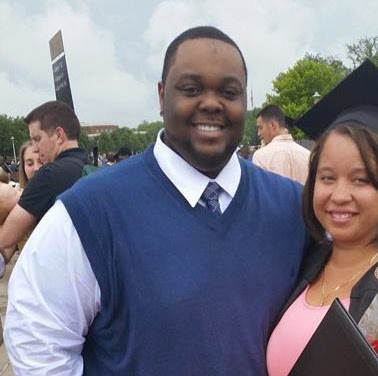Edgar E Jordan
age ~65
from Farmington, MI
Edgar Jordan Phones & Addresses
- 35650 Grand River Ave APT 203, Farmington, MI 48335 • 9175871936
- Farmington Hills, MI
Resumes

Fordham University School Of Law
view sourceLocation:
Farmington, MI
Industry:
Accounting
Work:
Fordham University School of Law
Education:
Fordham University School of Law
Doctor of Jurisprudence, Doctorates Michigan State University
Bachelors, Bachelor of Arts, Accounting
Doctor of Jurisprudence, Doctorates Michigan State University
Bachelors, Bachelor of Arts, Accounting
Skills:
Tax Preparation
Journal Entries
General Ledger
Income Tax
Account Reconciliation
Tax
Bookkeeping
Tax Returns
Strategic Planning
Quickbooks
Microsoft Office
Gaap
Analysis
Journal Entries
General Ledger
Income Tax
Account Reconciliation
Tax
Bookkeeping
Tax Returns
Strategic Planning
Quickbooks
Microsoft Office
Gaap
Analysis

Edgar Jordan
view source
Edgar Jordan
view source
Edgar Ed Jordan
view source
Edgar Jordan
view source
Edgar Jordan
view source
Edgar Jordan
view source
Edgar Jordan
view sourceUs Patents
-
Reinforced Aperture In Molded Plastic Article
view source -
US Patent:41133986, Sep 12, 1978
-
Filed:Sep 3, 1976
-
Appl. No.:5/720107
-
Inventors:Edgar R. Jordan - Farmington MI
-
International Classification:B25G 334
-
US Classification:403267
-
Abstract:A method for molding a wire insert in the body of a plastic article to reinforce a bolt-receiving opening. The wire insert is formed of a wire coil in which each convolution of the coil is in contact with its neighboring convolution. The coil has openings between adjacent convolutions to permit liquid plastic to flow between the convolutions as the article is being molded so that the coil is embedded within the plastic.
-
Valve Deactivator For Internal Combustion Engines
view source -
US Patent:41755340, Nov 27, 1979
-
Filed:Jul 14, 1977
-
Appl. No.:5/815743
-
Inventors:Edgar R Jordan - Farmington MI
-
International Classification:F02D 1306
-
US Classification:123198F
-
Abstract:An internal combustion engine control system in which intake and exhaust valve deactivators are controlled in response to both engine throttle position and output speed in order to affect split engine operation. Voltages responsive to both throttle position and engine output speed are compared to generate a variable signal that controls the valve deactivators. Each deactivator includes a rotatable first cylindrical member axially fixed on an elongated engine support and also includes a second cylindrical member defining an enclosed cavity with the first member while positioned on the support between the engine and the first member. A helical spring of each deactivator encircles the cylindrical members thereof and has a first end axially fixed relative to the support and a second end that biases a rocker arm bearing toward the engine. Ports of the support and the first cylindrical member define inlet and exhaust passages to the cavity with the first cylindrical member in first and second rotational positions so as to allow the supply and exhaustion of pumped engine oil to the cavity in order to position the second cylindrical member and the bearing axially along the support so as to control valve operation. The deactivators associated with the intake and exhaust valves of selected cylinders are sequenced so that the intake valve ceases to operate prior to the cessation of the exhaust valve operation upon deactivation, and the exhaust valve begins to operate prior to the intake valve operation upon subsequent activation of the valves.
-
Engine Cylinder Valve Control Mechanism And Cylinder Head And Engine Incorporating Same
view source -
US Patent:41889258, Feb 19, 1980
-
Filed:Jan 27, 1978
-
Appl. No.:5/872983
-
Inventors:Edgar R. Jordan - Farmington MI
-
International Classification:F01L 902
-
US Classification:123 9012
-
Abstract:An engine valve operating mechanism for operating the poppet valves controlling the intake and exhaust ports of each cylinder independently of each other and independently of the crank shaft speed. The mechanism includes an extendable and retractable fluid actuator having first and second members telescopically engaged with each other, one of which members is rotatable with respect to the other. An expansible and contractable fluid chamber is defined between the members, and the flow of fluid into and out of the chamber is controlled in accordance with the angular position of the members with respect to each other. When fluid flows into the chamber, the chamber expands causing the actuator to extend. When fluid is exhausted from the chamber, the actuator contracts. The actuator is mounted on a support member and engages a poppet valve operator to cause a poppet valve engaged by the operator to move in opening and closing directions in response to extension and retraction of the actuator.
-
Valve Deactuator For Internal Combustion Engines
view source -
US Patent:41145887, Sep 19, 1978
-
Filed:Jun 24, 1976
-
Appl. No.:5/699612
-
Inventors:Edgar R. Jordan - Farmington MI
-
International Classification:F02D 1306
-
US Classification:123198F
-
Abstract:A valve deactuator for an internal combustion engine is disclosed that utilizes a body of trapped liquid to permit a rocker arm to actuate its associated valve. When the liquid is released the rocker arm no longer makes its normal valve-opening excursion in response to movement of its associated pushrod.
-
Valve Control Mechanism For Internal Combustion Engines
view source -
US Patent:43377394, Jul 6, 1982
-
Filed:Mar 24, 1980
-
Appl. No.:6/132949
-
Inventors:Edgar R. Jordan - Farmington MI
-
International Classification:F02D 1306
-
US Classification:123198F
-
Abstract:An internal combustion engine valve deactivator mechanism including a pair of reciprocable cylindrical members and a movable piston therein which together function as a normal tappet when pressurized fluid is fed to a chamber defined between the piston and a first cylindrical member but when the pressurized fluid is exhausted from the chamber the engine valves of the engine remain seated by their respective valve springs while the two cylindrical members are allowed to reciprocate with respect to each other by the piston. Engine oil pressure may be used as the operating fluid for the valve deactivator. An inlet passage formed in the cylinder block feeds pressurized fluid to the chamber in a first position of a control valve located within the cylinder block to move the piston away from the first member to prevent the second member from reciprocating with respect to the first member and thereby enable normal operation of an engine cylinder intake or exhaust valve by its pushrod. An exhaust passage also formed in the cylinder block exhausts the pressurized fluid from the chamber in a second position of the control valve so that the piston is movable towards the first member to allow the second member to reciprocate with respect to the first member to thereby deactivate the valve operation.
-
Engine Control System And Valve Deactivator Thereof
view source -
US Patent:41732090, Nov 6, 1979
-
Filed:Dec 16, 1977
-
Appl. No.:5/861377
-
Inventors:Edgar R. Jordan - Farmington Hills MI
-
International Classification:F02D 1306
-
US Classification:123198F
-
Abstract:An internal combustion engine control system in which intake and exhaust valve deactivators are controlled in response to both engine throttle position and output speed in order to affect split engine operation. Voltages responsive to both throttle position and engine output speed are compared to generate a variable signal that controls the valve deactivators. Each deactivator includes a rotatable first cylindrical member axially fixed on an elongated engine support and also includes a second cylindrical member defining an enclosed cavity with the first member while positioned on the support between the engine and the first member. A helical spring of each deactivator encircles the cylindrical members thereof and has a first end axially fixed relative to the support and a second end that biases a rocker arm bearing toward the engine. Ports of the support and the first cylindrical member define inlet and exhaust passages to the cavity with the first cylindrical member in first and second rotational positions so as to allow the supply and exhaustion of pumped engine oil to the cavity in order to position the second cylindrical member and the bearing axially along the support so as to control valve operation. The deactivators associated with the intake and exhaust valves of selected cylinders are sequenced so that the intake valve ceases to operate prior to the cessation of the exhaust valve operation upon deactivation, and the exhaust valve begins to operate prior to the intake valve operation upon subsequent activation of the valves.
Googleplus

Edgar Jordan

Edgar Jordan

Edgar Jordan

Edgar Jordan

Edgar Jordan

Edgar Jordan

Edgar Jordan

Edgar Jordan

Edgar Jordan
view source
Edgar Jordan Solis
view source
Edgar Jordan
view source
Edgar Jordan
view source
Edgar Jordan
view source
Edgar Jordan
view source
Jordan Edgar
view source
Edgar Jordan
view sourceClassmates

Edgar Jordan
view sourceSchools:
South Ozone Park Public School 223 South Ozone Park NY 1992-1999
Community:
Jonathan Ciaramella, Jack Baggelaar, Brenda Levine, Gloria Lori, Catherine Monahan

Edgar Jordan
view sourceSchools:
Johnson Health Professions High School Augusta GA 1993-1997
Community:
Tammy May, Christopher Ladun, Melvin Frazier

Edgar Jordan
view sourceSchools:
Dan D. Rogers Elementary School Dallas TX 1986-1987, W.H. Gaston Middle School Dallas TX 1987-1989
Community:
Kelly Pound, Jerry Watts

Edgar Jordan
view sourceSchools:
Goldsboro High Shcool Goldsboro NC 1970-1974
Community:
Thomas Drew, Ricardo Young, Patricia Kornegay, Gail Cousins, Phyllis Davis, Lena Bennerman, Anita Jacobs, Raydell Uzzell, Pearlie Campbell, Sharon Smith, Marva Shearod

Edgar Jordan
view sourceSchools:
Harding High School St. Paul MN 2002-2006
Community:
Abdi Qowle, Stacy Scheler, Jaymie Ugro, Yuliana Acosta, Jeremy Cooper, Yee Vang, Falis Sheikhdon, Meng Chang, Meggan Walsh, Bedie Love, Noelle Cain

South Ozone Park Public S...
view sourceGraduates:
Prasanna Balaji (2002-2006),
Joshua Arrington (1985-1986),
Edgar Jordan (1992-1999),
Derek Jenkins (1989-1993),
Nahemah Wilks (1995-1999)
Joshua Arrington (1985-1986),
Edgar Jordan (1992-1999),
Derek Jenkins (1989-1993),
Nahemah Wilks (1995-1999)
Youtube
Myspace

Jordan Edgar (EDGAR!!!!) ...
view sourceJordan Edgar (EDGAR!!!!)'s profile on Myspace, the leading social entertainment destination powered by the passion of our fans.
Flickr
Get Report for Edgar E Jordan from Farmington, MI, age ~65



















